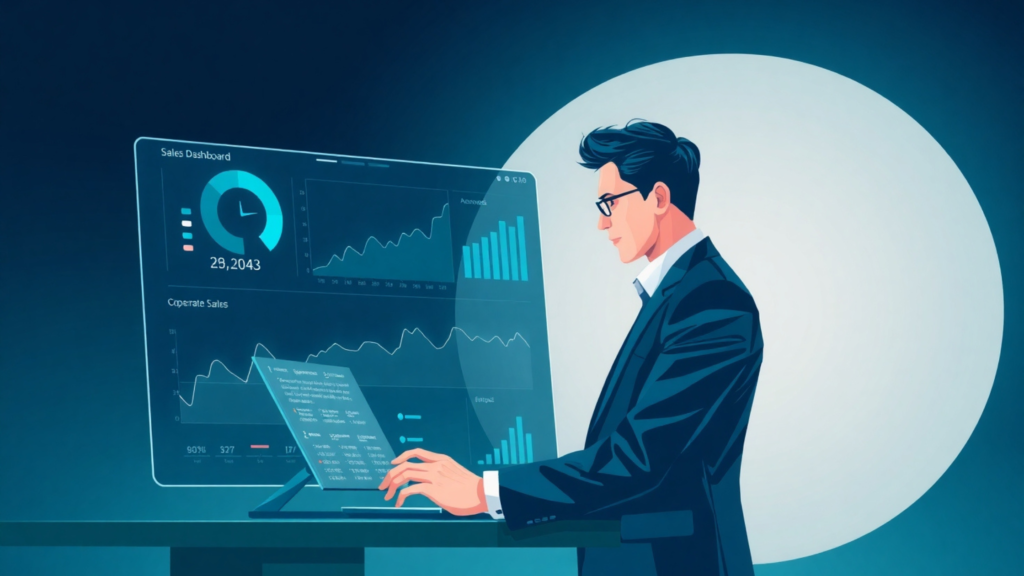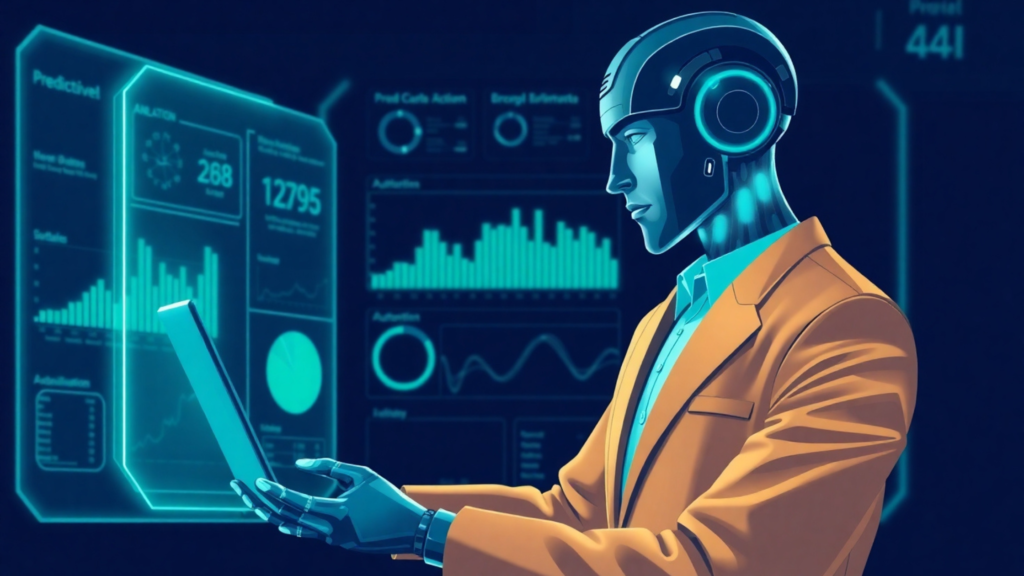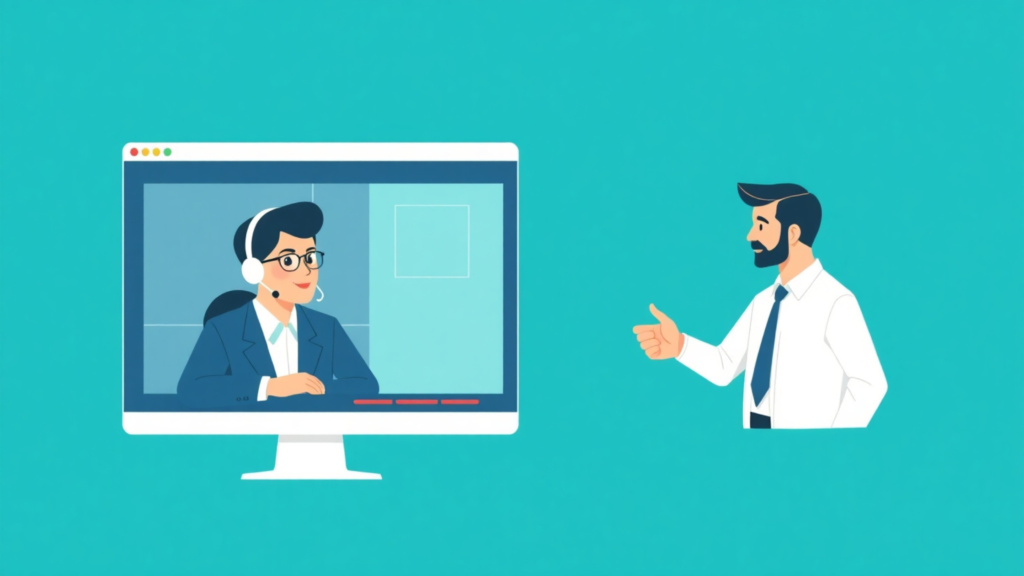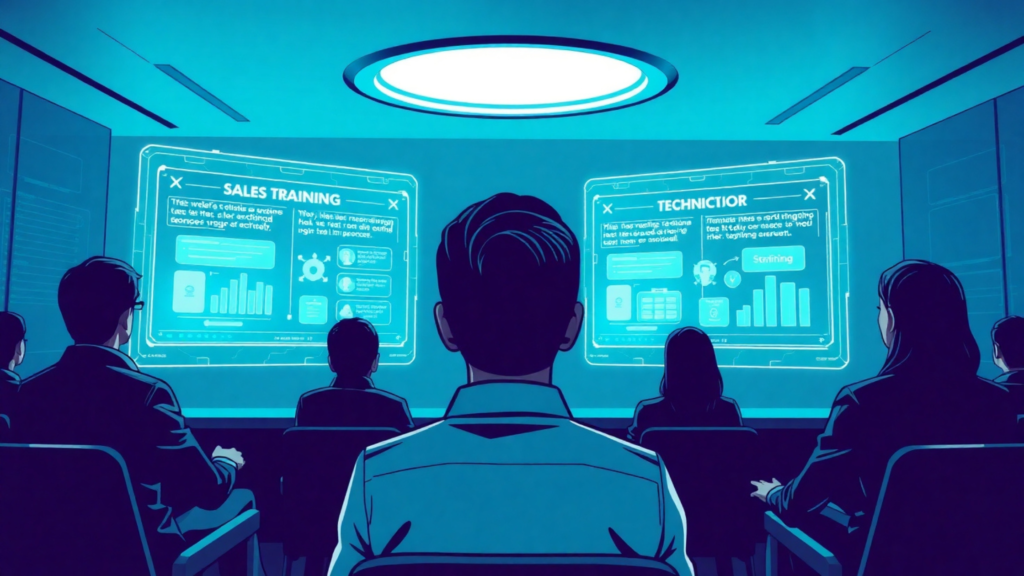10 Best Sales Strategies for 2025 to Boost Productivity & Success

The sales landscape is undergoing significant changes as we enter 2025. Advances in technology, shifts in consumer behavior, and increasing competition require businesses to rethink their sales strategies. Sales professionals must stay ahead by adopting modern approaches that align with emerging trends.
This guide explores the 10 best sales strategies for 2025 to enhance productivity and improve success rates. Whether you’re a B2B sales professional, sales manager, entrepreneur, or business owner, these strategies will help you refine your approach, close more deals, and build long-lasting customer relationships.
1. Leverage AI and Automation in Sales

How AI is Reshaping Sales in 2025
Artificial Intelligence (AI) is becoming a vital part of sales, allowing businesses to automate time-consuming tasks and improve efficiency. AI-powered tools are helping sales teams with the following:
- Lead Scoring: AI analyzes customer data to determine which leads are most likely to convert.
- Personalized Outreach: Automated email sequences adjust content based on recipient behavior.
- Sales Forecasting: AI predicts sales trends, allowing businesses to make data-driven decisions.
By implementing AI-driven sales tools, businesses can improve accuracy and focus on high-value tasks, such as relationship-building and closing deals.
AI-Powered Sales Tools to Use
Sales teams can take advantage of AI-driven tools such as:
- HubSpot AI – Provides smart recommendations for lead engagement.
- Salesforce Einstein – Automates workflows and offers predictive insights.
- Gong.io – Analyzes sales conversations to identify patterns and areas for improvement.
Case Study: AI in Action
A SaaS company integrated AI into its sales process and increased sales productivity by 30%. By using AI-powered lead scoring and automated outreach, sales reps could focus on prospects with higher conversion potential.
2. Embrace Hyper-Personalization

The Shift to Account-Based Selling (ABS)
Modern buyers expect a personalized experience, making account-based selling (ABS) a critical strategy. Unlike traditional mass outreach, ABS focuses on tailoring sales efforts to individual accounts or high-value prospects.
Strategies for Implementing Personalization
- CRM data can be used to segment customers based on behavior and preferences.
- Create personalized email sequences using AI-driven marketing automation.
- Develop tailored sales pitches that address specific customer pain points.
Real-World Example
Netflix’s recommendation algorithm personalizes content based on viewing history. A similar approach can be applied in B2B sales by customizing product offerings based on past interactions.
3. Adopt a Hybrid Sales Model

Why Hybrid Selling is the Future
Sales processes have evolved into a mix of in-person and virtual interactions, allowing businesses to expand their reach and maintain flexibility. The hybrid sales model combines digital engagement with face-to-face meetings, making it easier to cater to diverse customer preferences.
Best Practices for a Successful Hybrid Sales Strategy
- Optimize digital touchpoints: Use video calls, chatbots, and social selling.
- Use in-person meetings strategically: Reserve face-to-face interactions for high-value clients or complex negotiations.
- Leverage tools for seamless communication:
- Zoom – For virtual meetings.
- Calendly – For scheduling.
- Drift – AI-driven chatbots for lead engagement.
By adopting a hybrid approach, businesses can increase conversion rates while maintaining cost-effective sales processes.
4. Utilize Data-Driven Decision Making

The Power of Real-Time Data in Sales
Sales success in 2025 is driven by data analytics. Companies that leverage real-time insights can make informed decisions and optimize their sales strategies.
Essential Data Analytics Tools for Sales Teams
- Google Analytics – Tracks user behavior and engagement.
- Clari – Provides real-time sales forecasting insights.
- Tableau – Visualizes sales data for better decision-making.
Case Study: Data-Driven Sales Growth
A B2B software company used predictive analytics to refine its sales pipeline, resulting in a 20% increase in closed deals within six months.
5. Focus on Customer Retention

The Value of Customer Lifetime Revenue
Acquiring new customers is 5x more expensive than retaining existing ones. Businesses that prioritize customer retention benefit from higher customer lifetime value (CLV) and consistent revenue streams.
Effective Customer Retention Strategies
- Upselling and cross-selling: Offering additional products or services to existing customers.
- Post-sale engagement: Regular check-ins, loyalty programs, and educational content.
- Exceptional customer service: Quick response times and personalized support.
Example: Amazon’s Retention Strategy
Amazon enhances customer loyalty through personalized recommendations, fast delivery, and excellent customer service.
6. Implement Social and Community-Driven Selling

The Rise of Social Selling in B2B
Social selling is now an essential part of B2B sales strategies. Platforms like LinkedIn, Twitter, and Facebook help businesses engage with potential buyers and establish trust.
Steps to Build a Social Selling Strategy
- Create valuable content that positions your brand as an industry expert.
- Engage with prospects through comments, messages, and personalized outreach.
- Use LinkedIn Sales Navigator to identify and connect with decision-makers.
Example: LinkedIn’s Impact on Lead Generation
A tech company increased its lead generation by 50% using a LinkedIn-based social selling strategy.
7. Invest in Continuous Sales Training and Development

Upskilling Your Sales Team for 2025
Sales techniques and customer expectations evolve constantly, making continuous training essential.
Effective Learning Platforms for Sales Professionals
- Coursera & Udemy – Offer sales training courses.
- LinkedIn Learning – Provides industry-specific training.
- Internal training programs – Tailored coaching sessions.
Case Study: Corporate Sales Training Success
A Fortune 500 company improved its win rates by 25% through an internal sales development program.
8. Align Sales and Marketing Efforts

Breaking Down Silos Between Sales and Marketing
Collaboration between sales and marketing is crucial for seamless customer experiences and higher conversion rates.
Best Practices for Sales-Marketing Alignment
- Share data between teams using CRM tools.
- Develop unified messaging to ensure consistency in outreach.
- Hold regular meetings to align goals.
Key Tools for Integration
- HubSpot – Marketing and sales automation.
- Marketo – Lead nurturing platform.
9. Emphasize Sustainability and Ethical Practices

The Growing Demand for Ethical Selling
Modern buyers prefer brands that align with their values. Sustainable and ethical sales practices can strengthen customer trust and brand loyalty.
How to Integrate Sustainability in Sales Strategies
- Offer eco-friendly product options.
- Reduce waste in sales processes (e.g., digital contracts instead of paper).
- Support corporate social responsibility (CSR) initiatives.
Example: Patagonia’s Ethical Branding
Patagonia’s commitment to sustainability has helped it build strong customer loyalty.
10. Harness the Power of Video Content

The Role of Video in Sales Presentations
Video content enhances engagement and helps sales teams connect with prospects more effectively.
Best Practices for Creating High-Impact Sales Videos
- Use Vidyard and Loom for personalized outreach.
- Create customer testimonial videos to build credibility.
- Use live Q&As for real-time engagement.
Example: Video Marketing in B2B Sales
A software company increased its conversion rates by 35% by incorporating video demos into its sales process.
How to Choose the Right Sales Outsourcing Company
Outsourcing sales can help businesses expand their reach, generate more leads, and improve efficiency. But choosing the right sales outsourcing company is not just about picking a provider; it’s about finding a partner that understands your business goals and aligns with your sales strategy.
Key Factors to Consider
- Industry Experience – Look for a company that has worked in your industry. They will be more familiar with your market, customers, and common challenges.
- Service Offerings – Some companies focus only on lead generation, while others provide full sales enablement services, including strategy, training, and closing deals. Make sure their services match what you need.
- Technology & Tools – A good outsourcing partner should have access to CRM systems, sales automation tools, and data-driven insights that help improve efficiency.
- Quality of Sales Reps – Ask about their hiring and training process. A skilled sales team with strong communication skills and product knowledge will bring better results.
- Flexibility & Scalability – Your sales needs may change over time. Choose a partner that can adapt to your business growth and adjust strategies when needed.
- Proven Results – Look at case studies, testimonials, and client reviews. A company with a history of successful partnerships and measurable results is a strong choice.
- Cultural Fit – Sales is about building trust. The outsourcing team should align with your brand values, messaging, and customer approach to ensure a smooth experience for prospects.
Recommended Partner for Sales Outsourcing
One company that provides sales enablement services is Saletancy. They offer a range of lead generation and sales solutions, helping businesses scale efficiently.

Choosing the right sales outsourcing partner can save time, increase productivity, and improve sales performance—but only if you select a company that understands your needs and delivers reliable, high-quality results.
Conclusion
The sales landscape in 2025 requires businesses to embrace AI, data-driven strategies, hybrid models, and ethical practices. By focusing on customer retention, social selling, and continuous learning, businesses can improve sales efficiency and long-term success.
FAQs
1. What are the most effective sales strategies for 2025?
The best sales strategies for 2025 focus on personalization, technology, and customer relationships. Businesses that succeed will:
- Use AI and automation to streamline processes.
- Focus on data-driven decision-making for better forecasting.
- Adopt a hybrid sales model (mix of in-person and virtual selling).
- Strengthen social selling through LinkedIn and other platforms.
- Prioritize customer retention over constant new acquisition.
Sales is shifting toward more personalized, efficient, and relationship-driven approaches. Companies that adapt will see better results and long-term success.
2. How can I improve my sales productivity?
Sales productivity is about working smarter, not harder. Here are some ways to improve it:
- Use a CRM: Track customer interactions and automate follow-ups.
- Prioritize leads: Focus on prospects most likely to convert.
- Limit manual tasks: Automate emails, scheduling, and data entry.
- Time block your day: Set specific hours for outreach, meetings, and follow-ups.
- Invest in sales training: Better skills lead to higher conversion rates.
The goal is to spend more time on high-value activities like building relationships and closing deals.
3. What is sales automation, and why does it matter?
Sales automation uses technology to handle repetitive tasks, so sales teams can focus on selling. It can:
- Send personalized emails at the right time.
- Track customer interactions in a CRM.
- Score leads based on their likelihood to buy.
- Schedule meetings without back-and-forth emails.
By automating routine tasks, sales reps can spend more time building connections with potential buyers.
4. What is the difference between inbound and outbound sales?
- Inbound sales: Customers come to you. This happens through content marketing, SEO, referrals, and organic interest. Example: A prospect finds your blog and fills out a contact form.
- Outbound sales: You reach out to customers first. This includes cold calling, emailing, and social selling. Example: A salesperson emails a targeted list of potential clients.
Most companies use both inbound and outbound sales to create a balanced pipeline.
5. How do I personalize my sales approach without being intrusive?
Customers expect personalization, but it should feel natural. Here’s how to do it:
- Use their name and reference their business in emails.
- Mention specific challenges they may be facing.
- Offer tailored solutions instead of generic pitches.
- Follow their activity on LinkedIn before reaching out.
The key is to make customers feel understood, not targeted.
6. How can I use LinkedIn for sales?
LinkedIn is one of the best platforms for B2B sales. Here’s how to use it effectively:
- Optimize your profile: A professional headshot, clear bio, and strong headline help build credibility.
- Engage with content: Comment on posts, share insights, and write helpful articles.
- Connect strategically: Don’t send cold pitches—build relationships first.
- Use Sales Navigator: This tool helps find and reach decision-makers faster.
A thoughtful LinkedIn strategy can lead to stronger business connections and more opportunities.
7. What is a hybrid sales model, and why is it important?
A hybrid sales model combines in-person and virtual selling, allowing businesses to adapt to different customer preferences.
- Virtual selling: Saves time and money by using video calls and chat tools.
- In-person selling: Still valuable for closing high-ticket deals and building deeper relationships.
By using both, companies can connect with a wider audience while maintaining personal relationships.
8. What should I look for in a sales outsourcing company?
Choosing a sales outsourcing company is about finding the right fit. Here’s what to consider:
- Industry experience: Do they understand your market?
- Service range: Lead generation vs. full sales support.
- Technology: Do they use modern CRM and automation tools?
- Sales team quality: Are the reps well-trained?
- Results: Check case studies and client reviews.
A great outsourcing partner feels like an extension of your team, not just an external vendor.
9. How do I keep customers coming back?
Customer retention is more cost-effective than constantly chasing new leads. To build loyalty:
- Stay in touch: Follow up even after a sale is closed.
- Provide value: Offer insights, training, or exclusive deals.
- Ask for feedback: Show customers you’re listening.
- Personalize interactions: Treat each customer like they matter.
Loyal customers spend more and refer others—making retention a priority is a smart business move.
10. What are the best tools for sales teams in 2025?
Modern sales teams rely on technology to improve efficiency. Here are some must-have tools:
- CRM: HubSpot, Salesforce (for tracking leads and customer interactions).
- Email automation: Mailchimp, Outreach (for personalized outreach).
- Sales analytics: Clari, Gong.io (for sales forecasting and conversation analysis).
- Scheduling: Calendly, Chili Piper (to simplify meeting booking).
- Social selling: LinkedIn Sales Navigator (for finding and engaging prospects).
Using the right tools makes sales more efficient, productive, and data-driven.